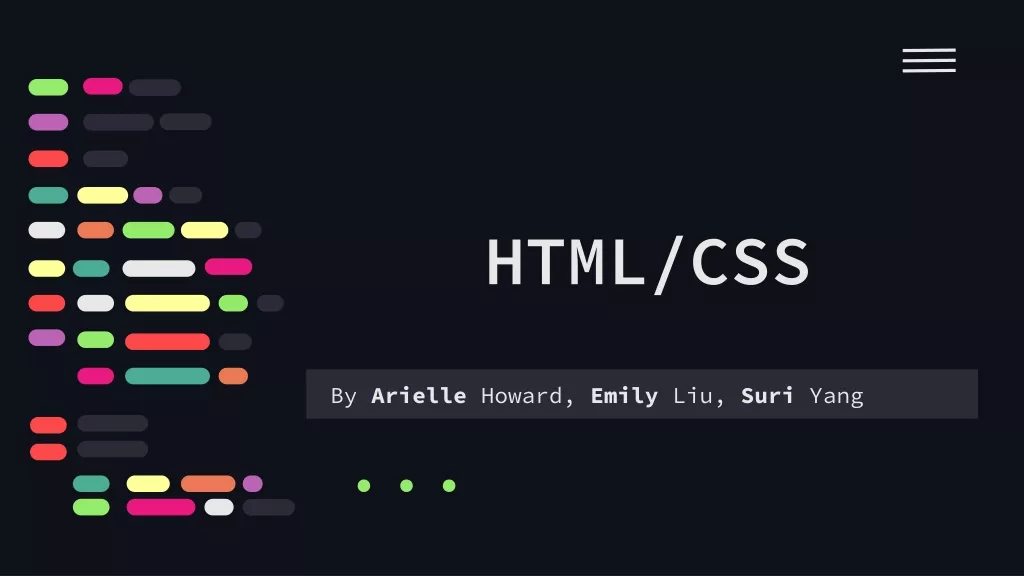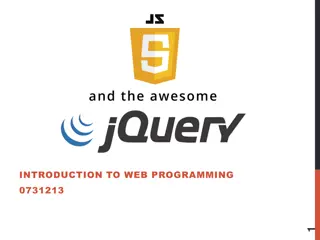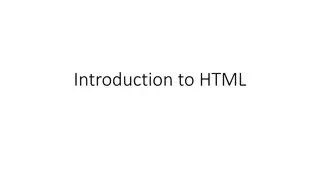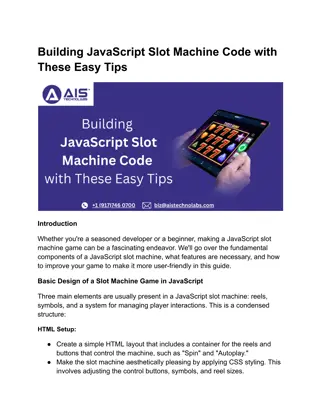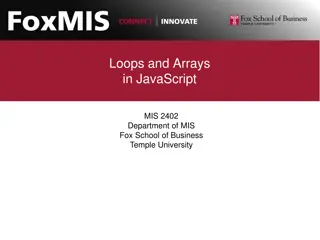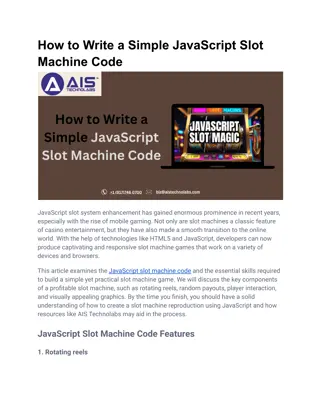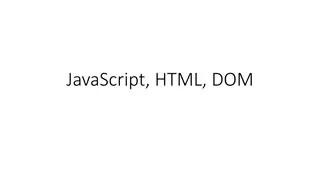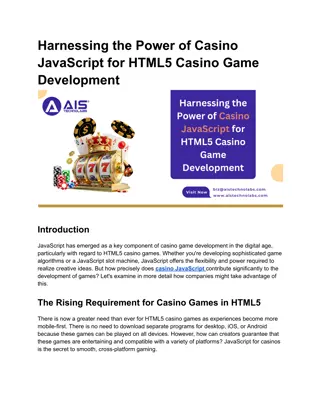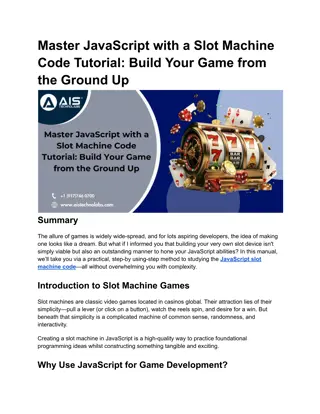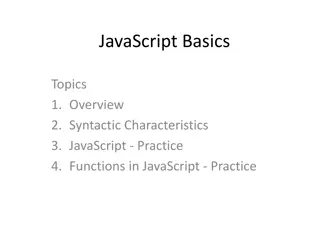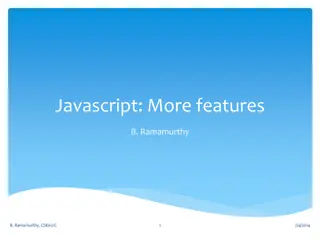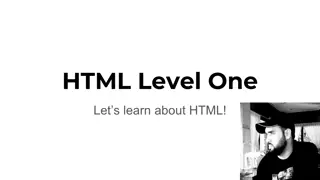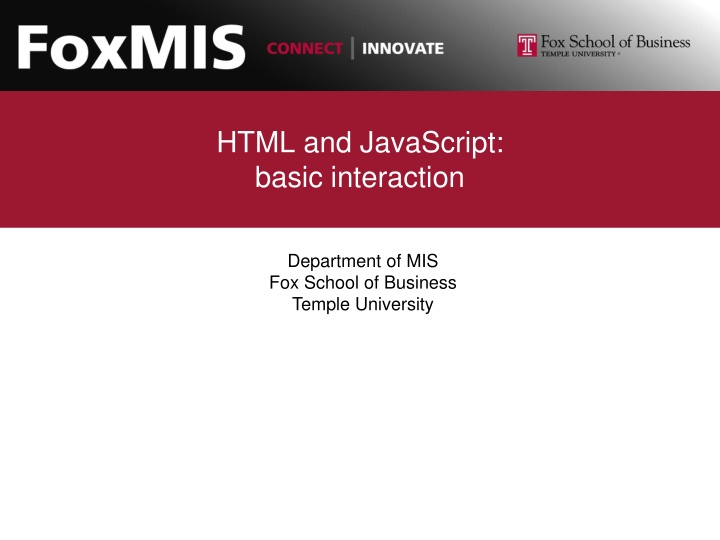
Based on the provided content: "Understanding Basics of HTML, JavaScript, and CSS
Explore the fundamentals of HTML, JavaScript, and CSS for web development. Learn the role of JavaScript in performing calculations, event handling, and HTML manipulation. Discover the structure of HTML files and the importance of identifying tags with unique IDs for JavaScript manipulation. Gain insights into code blocks and comments in JavaScript programming.
Download Presentation

Please find below an Image/Link to download the presentation.
The content on the website is provided AS IS for your information and personal use only. It may not be sold, licensed, or shared on other websites without obtaining consent from the author. If you encounter any issues during the download, it is possible that the publisher has removed the file from their server.
You are allowed to download the files provided on this website for personal or commercial use, subject to the condition that they are used lawfully. All files are the property of their respective owners.
The content on the website is provided AS IS for your information and personal use only. It may not be sold, licensed, or shared on other websites without obtaining consent from the author.
E N D
Presentation Transcript
HTML and JavaScript: basic interaction Department of MIS Fox School of Business Temple University
Remember HTML JavaScript CSS Slide 2
Now in our HTML files The <style> tag and related CSS rules are specified inside the <head> tag. <html> <head> <!-- Stuff goes here --> </head> <body> <!-- Stuff goes here --> </body> <script> // Stuff goes here </script> </html> Most html tags go inside the <body> tag. JavaScript code goes here, inside the <script> tag. Order matters here! The head tag goes first, followed by body, followed by script. There are acceptable variations on this, but for MIS2402, this is the pattern to follow. Slide 3
What is JavaScript for? What is the purpose of code that we find in the <script> tag? 1. Perform calculations by using variables, expressions, conditional statements, loops and functions. 2. Wait for events to occur and take actions when they do. (For example: what happens when a button gets clicked?) 3. Manipulate the HTML tags found in the <body> This is what JavaScript has been traditionally used for. These are all actions that take place when JavaScript runs inside in a web browser like Chrome. JavaScript can also run outside the browser, in its own environment called a node. That implementation of JavaScript is called node.js. Node.js is not used in this class but is a major topic in MIS3502. Slide 4
A second look at the <body> tag contents Look at the following example of some HTML found in the <body> tag. The <h1> tag here is said to have innerHTML. The text Hello World is the inner HTML of the <h1> tag. What other tags have inner HTML? Is there an HTML tag here that simply cannot have inner HTML? Why? Some, but not all, of the HTML tags have been assigned attributes. The attributes are highlighted in red. Which attribute do you suppose would be used to uniquely identify a tag? Using an id (like textDisplayed1) to identify a tag becomes very important when we write JavaScript code. We need to identify a tag before we can manipulate it. Slide 5
Some more basics The JavaScript code block: In JavaScript it is often useful to group multiple lines of code together into a sort of bundle called a code block . The curly brackets { } are used to indicate where a code block begins and ends. JavaScript comments: In any programming language, it is often advantageous to add comments notes to yourself or another programmer. In JavaScript, a pair of forward slashes // are used to indicate the beginning of a single line comment. As you work on the assignments in this class, always pay attention to the comments provided to you by the instructor. Slide 6
Lets see this in action Hello! See assignment03_01.zip, assignment03_02.zip, assignment03_03.zip and the assignment03 document. Slide 7

